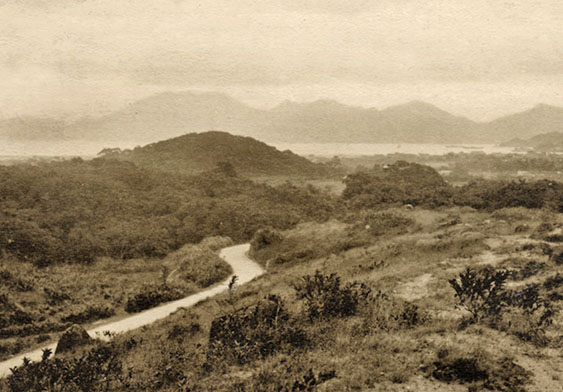
The view overlooking Shatin Pass
Linking Kowloon and Shatin, the trail in this picture has now been expanded into what is now known as Shatin Pass Road. The photo was taken in the 1910s.-Hong Kong Memory Website
The view overlooking Shatin Pass
Linking Kowloon and Shatin, the trail in this picture has now been expanded into what is now known as Shatin Pass Road. The photo was taken in the 1910s.-Hong Kong Memory Website
Kowloon’s walled village was simply not comparable to their rural counterparts in Shatin
In the days when Ng Chiu Ying returned to the village as a child,there were still many vegetable fields in the surrounding areas. The nearby public housing blocks and factory buildings in San Po Kong were eventually completed in the 1960s. Ng Chiu Ying did not regard the rural landscape of Kowloon City as interesting since agricultural development in Kowloon City was nowhere like that in Shatin where his older aunt lived. She was a wealthy woman in the latter villageSiu Lek Yuen, owning living in a standard three-storey 700 square-foot village house she owned and with large expanses of farmland. The old lady aunt liked farming, raising chickens and used to make sticky rice dumplings to celebrate Lunar New Year. Houses in Siu Lek Yuen were spacious and had better sanitary conditions as each household had a septic tank for treating sewage.
Back then the village houses in Nga Tsin Wai were arranged in a similar layout to what it is like today but the cramped, small houses of that time were in poor sanitation. As a result, an unpleasant odour could be smelled immediately as one entered the village. Having an area of only 100 to 200 square feet, the houses along the edge of the village were built with just a few pieces of wood and iron sheets. The dwellings were even shabbier than houses at the inside. Some houses had no water or electricity supply and their roofs leaked when it rained.


 BACK
BACK  CLOSE
CLOSE 